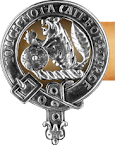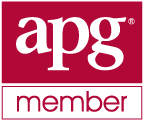While most of us still utilize the historical socieites, courthouses and libraries that our previous generations of genealogists did, we have also come to rely heavily upon the digital age to make our research, and our businesses, much easier to do.On the 7th of July, DIck Eastman, who authors, "Eastman's Online Genealogy Newsletter" [EOGN] wrote a wonderful article that I am going to share here, with his permission, regarding the use of the Internet for research. While there are many pro's [and much discussion and dissension among the ranks about research via the Internet, I think Dick pretty much covers my own opinion[s] on the matter. Thanks Dick! - cbhEOGN"July 07, 2008
The Rising Cost of Travel Versus Online Research
A newsletter reader asked an interesting question this week. Here is an extract from a longer message:
As the economy continues to worsen and gas prices rise exponentially, I am curious to know how this will affect services such as Footnote.com, Ancestry.com, Worldvitalrecords.com, and others. Will these companies raise their prices in relation to other increases? Or will they maintain or possibly lower prices to keep subscribers? In tough times, leisure activities are among the first to suffer.
I am not sure that my crystal ball is any clearer than anyone else's. However, a few things do seem obvious to me.
I suspect the rising price of gas will be good for the online sites that offer images of original records, such as Footnote.com, HeritageQuestOnline.com, WorldVitalRecords.com, Ancestry.com, and others. As prices continue to rise for trips to libraries and other repositories, many people will turn to cheaper, online access whenever possible.
Let's compare online research expenses versus "in-person" research:
Prices will vary widely, depending upon where you live in relation to the repositories you wish to visit. I'll start off with my own example.
I live 35 miles outside a major city and am fortunate to have several major genealogy libraries, repositories, and archives within convenient driving distance of my home. Assuming gas mileage of 20 to 25 miles per gallon and gas prices of $4.00 to $4.50 for each gallon, it now costs me a minimum of $12.00 or more to visit the nearest such repositories that are about 35 miles away (that is obviously a 70-mile round trip, requiring three or more gallons of gasoline). Of course, that is for gasoline alone.
Next, add in tolls and parking. A round trip into the city from my home by the most convenient route now costs $7.50 in round-trip tolls. In most East Coast cities, parking fees start at $20 and go up. In fact, they go up quickly. It is not unusual to pay $30 or more per day for parking at the repositories I visit. Some of these repositories also charge admission fees as well as photocopying fees.
A cheaper method is public transportation to the city. However, this can be a false economy. A trip by commuter train costs me a couple of dollars in gas to drive to the train station, $4 for parking at the train station (a bargain in this area), and $12 for a round-trip ticket. I have to be at the train station by 7:00 AM or so in order to find a parking spot as the parking lot is usually full by 7:15 AM. The drawback is that the trip takes three times as long as an automobile trip, cutting into the research time available.
Even worse, one of the major repositories that I go to is more than a one-and-a-half mile walk from the nearest public transportation. That's a long walk in bad weather! The closest regional library of the National Archives and Records Administration is even further from public transportation. I always drive there.
I now figure that a single trip to any of the nearby “free” genealogy repositories costs me a minimum of $40 to $60, counting gas, parking fees, and tolls.
My statistics ignore automobile depreciation, repairs, tires, insurance, and similar expenses. These expenses are difficult to calculate on a per-mile basis but nonetheless are real expenses. Please consider my calculations to be the minimum expenses; most of us will pay more than this for each trip.
Of course, I am lucky to live within 35 miles of several major research facilities. If they have information about my ancestors, I am fortunate enough to pay "only" $40 to $60 for a single trip.
Many people live in rural areas or do not have nearby resources with information about ancestors who lived in another part of the country. Many genealogists have to pay much, much more than my $40 to $60 expenses. I suspect they envy those of us who are blessed with nearby, first-class research facilities.
If I need to travel to a distant state archives or local historical society or other repositories near the homes of my ancestors, prices mushroom quickly. Regardless of the mode of transportation, an overnight or longer trip to a distant repository can cost hundreds of dollars.
In comparison, the online services charge rather small fees for access. Footnote.com charges $7.95 a month for unlimited access. WorldVitalRecords.com charges $9.95/month (for the U.S. Collection) or $14.95/month (for the World Collection) for unlimited access. Even Ancestry.com's comparatively high prices of $12.95/month to $19.95/month (for the U.S. Deluxe Membership) or $24.95/month to $29.95/month (for the World Deluxe Membership) seem much cheaper than an in-person visit. If the online service has the record you seek, the savings can be enormous.
The key phase is "If the online service has the record you seek..." While these online services now have millions of records available, that is still a tiny percentage of all records available on paper or on microfilm. To be sure, the most popular records are now available online: U.S. census records, U.K. census records, some Canadian census records, U.S. Revolutionary War pension applications, Social Security Death Index, and more. However, if you seek a land record from Ohio or a marriage record from Vermont, you probably will not find it online.
I frequently make presentations to genealogy societies and to conventions. In one of my talks, I once stated that I estimated that fewer than 2% of all records of genealogy interest were available online. A nationally-known genealogy expert in the audience later disagreed with my assessment. Her estimate was that fewer than 0.02% of all records of genealogy interest are available online. Admittedly, neither of us has any documented statistics to back up our estimates.
Regardless of the precise number, it is obvious that the online sites only scratch the surface of available information. Nonetheless, if the record you seek is available online, a search of a commercial site can save hundreds of dollars in travel expenses. Even better, online searches often produce "hits" for records you didn't even consider or perhaps didn't even know about. Who knew that your great-great-grandfather filed a claim for losses suffered in the Civil War? A search of his name on the various online sites might produce results that you never dreamed of.
My correspondent asked, "Will these companies raise their prices in relation to other increases? Or will they maintain or possibly lower prices to keep subscribers?"
My belief is that the prices of the inexpensive services will remain about the same while the more expensive service(s) will be forced to drop prices, due to competitive pressures. The history of the online world has been one of constantly lowered pricing, and I do not see that trend changing. In fact, disk storage space is now much cheaper than it was only a few years ago. Web servers, high-speed Internet connectivity, and other expenses have remained about the same or have slowly come down. The one big expense is labor, and even that has been trimmed substantially in the past few years. Today's online services are leaner with lower corporate headcounts than those of a few years ago.
The long-term outlook for genealogists is great: more and more information is becoming available online every day. As this mass of available information increases, the need for expensive travel to view records in person is reduced.
I am confident that the online services will provide much cheaper access than any other available method. That is already true today, and the differences will increase with each passing year.
Posted by Dick Eastman on July 07, 2008 "
Let us know what you think!

















